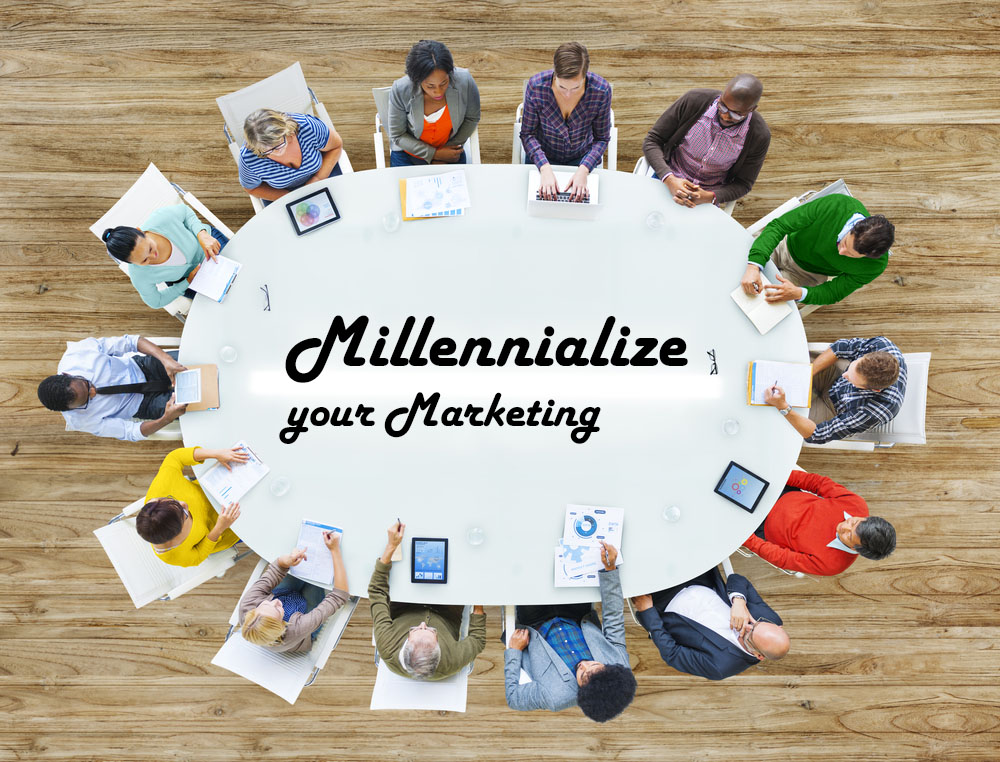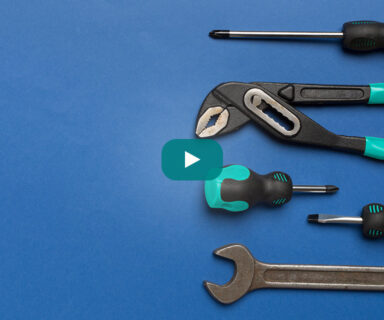 Did you know by 2030 Millennials will outnumber Boomers by 20 million?
Did you know by 2030 Millennials will outnumber Boomers by 20 million?
They already represent just under half of the folks researching our products (AdAge).
I’ve been doing a fair bit of research on this audience to help tech marketers better understand what this means for our content and messaging. In my first post on the topic, I talked a bit about millennial priorities and attitudes.
CliffsNotes version for those of you who didn’t get a chance to check it out: they have fun, they share and they’re big on values which mean our brands need to exhibit personality, highlight product value and showcase social responsibility far more than they have in the past.
What we didn’t get into is how this passionate, outgoing generation consumes content- what it likes and doesn’t like and how our content marketing efforts can evolve to better rise to their “great expectations.”
So let’s dig in!
Millennials…
…trust vendors!
46% of millennials read brand communications most or all of the time (30% at least some of the time) according to NewsCred.
That’s great news! All the effort you’ve put into building better, less product-centric content has absolutely paid off. According to a recent IBM study millennials, unlike their predecessors, actually trust vendors and seek them out much more readily whereas the gen X and baby boomer generations had sought out experts and other sources before vendors.
While they’re definitely referencing your sites and feeds, they’re also consuming everyone else’s. Millennials are our first true digital natives. They were practically born with a device in their hands (literally they have access to an average of 7.1 devices according to Yahoo). That means millennials also…
…consume more and bail faster
Millennials spend an average of 17.8 hours a day with different media (Crowdtap ) and can lose interest in less than 10 seconds (Tweet this). 41% note that the number one reason they leave content is because it’s too long (NewsCred).
Millennials have grown up in a world of content overload and as a result are conditioned to ignore the irrelevant, hone in on what matters and skim for what’s most impactful. They’re looking for content that’s useful and helps them ultimately “get smarter. “
While it’s certainly more work to create compelling yet concise content, there’s a payout: 60% will share it.
Marketer Consideration: Keep investing in your content, they’re referencing it, and they trust it. But inbound only won’t be enough. Millennials are consuming everything they can get their hands on. Be where they are, be relevant, and be concise.
…get by with a little help from their friends
5.4 hours of the millennial’s day is spent on user-generated content (Tweet this)
While other types of media consume more of the millennials’ time and attention, the peer-perspective is a critical component of the decision making process. According to Jeff Fromm, co-author of “Marketing to Millennials; Reach The Largest & Most Influential Generation of Consumers Ever”, millennials for the most part don’t make big decisions without peer consultation and are more excited about peer-validated decisions (70% as compared to <50% of non-millennials).
Marketer Consideration: Focus on socially enabling the content you do build- remember, if it’s good they’ll share it. Additionally, challenge yourself and your team to focus on identifying and empowering your advocates.
…prefer different content formats
The number of content formats we have at our disposal has exploded in the past few years. Just as we’ve started getting our arms around white papers vs. webcasts vs. blogs & infographics, the millennial had to come along and change everything! Not really everything, but I like the dramatic impact. There are however some differences in format preference for the millennial buyer. DemandGen Report recently looked at content formats comparing preferences for the under vs. over 40 year old demographics and found the following differences:
- Assessments/ROI Calculators (47% vs. 32%)
- E-books (45% vs. 21%)
- Webinars (29% vs. 15%)
- Infographics (32% vs. 13%)
Additionally, social media usage varied quite a bit with SlideShare being (in my opinion) the most notable difference:
- LinkedIn (50% vs. 42%)
- Twitter (39% vs. 36%)
- SlideShare (15% vs. 1%)
- Facebook (15% vs. 10%)
(And by the way, 34% of millennial buyers like a brand more when it uses social media (vs. 16% of buyers 36 or older according to GoldmanSachs). (Tweet this)
Marketer Consideration: Diversify content. Reinvent the E-Book and webcast and don’t underestimate the role of the infographic (and check out the infographic from GoldmanSachs – it’s really well done)
… care about the experience you create
69% of millennials will post positive comments if they’re happy with your brand
What makes them happy with their vendors you ask? The answers: A great customer experience that encompasses ease of doing business and willingness to collaborate according to IBM. While it sounds obvious, it’s actually not what Gen X and the Baby Boomer generation prioritize. Their focus falls more on speed of product deliver and quick responses to their requests.
Marketer Consideration: Evolve marketing, sales and customer service tactics to better leverage data for personalized interactions, social tactics with an emphasis on approach-ability and collaboration.
Disclaimer: the data I just laid out is a set of generalizations- a useful tool in marketing to help steer our efforts. These are by no means scripture. Take me for example. I was pleasantly surprised to learn that in some circles (though few) I was considered a millennial! However, my team regularly makes jokes at my expense about my boomer mentality noting… that I still use a pen…read books (like actual books- sometimes even magazines)… hate webcasts… and even print some studies (yes, on an actual printer… with paper). Leverage these findings as guidelines. The more you can do to learn from the people who interact with your brand and personalize those experiences, the more Millennialized your marketing will be.
Image source: PHC




